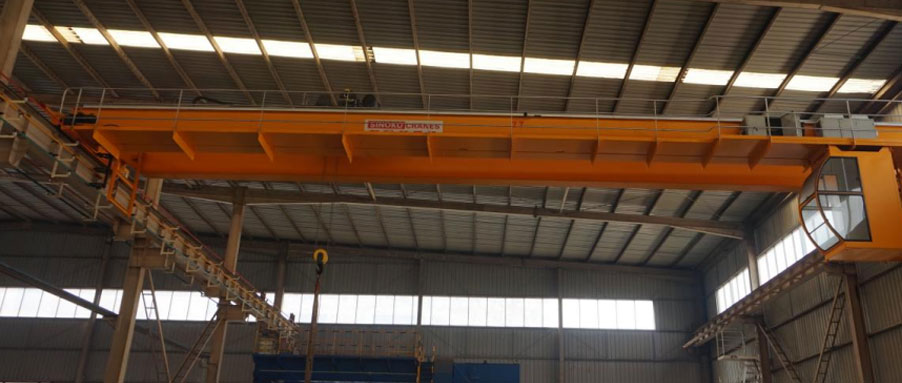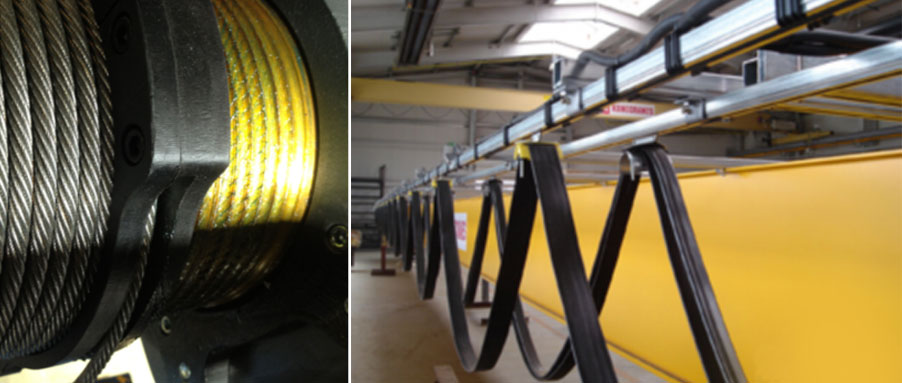WhatsApp: +8619037303916
Email: [email protected]
WhatsApp: +8619037303916
Email: [email protected]
Regular overhead crane or gantry crane inspections by qualified technicians, as well as a comprehensive maintenance program, ensure that you have reliable crane and that your workflow is not interrupted by costly downtime. Patching before necessary repairs can help you avoid budget-busting failures in the future.

I. General Requirement of Inspection
Inspectors and maintenance personnel should be appropriately qualified or authorized .
Lifting machinery should be inspected and maintained during use. All inspections and maintenance.
Records should be made and properly kept as the equipment archives of the hoisting machinery. Period inspection records, special inspection records and unplanned maintenance records should be kept until the equipment is until scrapped. Scheduled maintenance records should be kept until the next maintenance cycle.
The requirements for inspection and maintenance in the operating instructions provided by the manufacturer shall, at least, comply with the provisions of this part and the corresponding subparts. It should be determined according to different crane inspection items and maintenance items.
II. Daily Inspection
Routine inspections should be visually inspected and functionally tested on the hoisting machinery before the start of each work shift to detect any flawless.
Daily inspections should include the following items :
—working environment;
—safety guards;
—Lifting spreaders, wire ropes and lifting chains;
—Brake;
—Fire fighting equipment;
—Power supply;
—Control device;
—Monitoring system;
—Markings and warning signs;
—Leakage of pneumatic system, hydraulic system, cooling system, fuel system;
—Lighting device.

III. Periodic Inspection
Periodic inspections can be divided into weekly inspections, monthly inspections, quarterly inspections, semi-annual inspections and annual inspections. Determining the specific inspection cycle, inspection items and inspection methods according to different crane。 The annual inspection should be a full-item inspection .
For crane that needs to be dismantled and moved, at least regular inspections should be carried out for all the inspection items.
Periodic inspections should include the following items:
➢ Accompanying documents ;
➢ Inspection and maintenance records ;
➢Equipment installation, modification, maintenance, note, etc.
b) Metal Structure:
➢Metal structure deformation, crack, corrosion;
➢Weld cracks;
➢ Fasteners and pins.
c) Mechanism:
➢Hoisting mechanism;
➢Travelling mechanism;
➢Slewing mechanism;
➢Telescopic mechanism;
➢Other auxiliary mechanism (such as : mobile power supply system, spreader mechanism and lubrication system).
d) Key Components:
➢Lifting spreader;
➢Wire rope and its accessories;
➢Lifting chains;
➢Drum;
➢Pulley;
➢Brake;
➢Wheels;
➢Open gear;
➢Coupling;
➢Others.
e) Control Systems:
➢Electronic control system (including safety monitoring system);
➢Hydraulic system;
➢Pneumatic system.
f ) Safety Protection :
➢ Safety protection devices that limit the movement stroke and indicate the working position (such as lifting limit switch, swing lock device, outrigger retraction lock device, anti-collision devices, buffers and end stops, deflection indicators or limiters, level gauge, etc. );
➢ Anti-overload, overspeed safety protection devices ( such as: load limiter, lifting torque limiter, overspeed protection device, etc.);
➢ Anti-wind and anti-skid and anti-overturning devices (such as: anchoring devices, rail clamps, etc.);
➢ Interlock protection;
➢ Electrical protection ;
➢ Warning devices and signs (such as sound and light alarm devices, safety warning signs, etc.);
➢ Access and safety protection facilities ( such as stairs, steps, platforms, walkways, railings, protective covers, maintenance cages, etc.);
➢ Other safety protection devices (such as anemometers, safety protection of bus bars, track sweepers, anti-fall protection, broken rope protection, wire rope anti-dropping device, hoisting rope declination limiter, climbing device anti-dropping device, vehicle length, width and height restriction device, trolley end stops, human and vehicle accident detection device, automatic door anti-pinch device, anti-overlap automatic detection device, loose rope (chain) detection device, speed limiter, safety gear, emergency contact device, operation restraining device, etc.).
IV. Special Inspection
crane should be specially inspected after :
(1) When the following changes occur to the hoisting machinery :
➢ Safety protections;
➢ Rated load;
➢ Main stress-bearing structural parts;
➢ Mechanisms;
➢ Control stations and control systems;
➢ Power source;
➢ Wire rope or chain for lifting;
➢ lifting spreader;
➢ Chassis, base and support structure.
(2) When the following changes occur in the external environment beyond the normal environmental conditions of the equipment:
➢Extreme weather conditions ( such as storms, etc.);
➢Earthquake;
➢ Foundation (including crane track);
➢Fire or flood;
➢Abnormal operation conditions such as overloading, hanging, emergency stop, impact, etc. occur.
(3) Before the crane is reactivated after deactivation.
When the crane itself or external conditions change, the inspection items should be related to the changes or the damages. The inspection items should be based on the characteristics of various crane type.
After a crane accident occurs, the inspection items should be determined according to the specific circumstances of the accident.
V. Inspection Method
Visual inspection methods include visual inspection, ear listening, hand touching, nose sniffing, tapping, gauge measurement etc.
Visual inspection generally does not require disassembly.
Non-destructive testing includes penetrant testing, magnetic particle testing, ultrasonic testing, and radiographic testing.
The functionality of controls, switches and indicators should be checked.
To ensure proper functioning of the limiter and indicator for safe operation, the following restrictions apply:
Function test of the indicator and indicator :
a) Overload limiters and indicators ;
b) Travelling limiters and indicators ;
c) Performance limiters and indicators.
All movements of the crane ( e.g. hoisting, travelling, slewing) and no-load test to check for any abnormality or defects.
The basic movements of the crane (such as: lifting, running, slewing) should be carried out with a load test to check for any anomalies or defects. The applied load should be based on the purpose of the test, but it should not exceed the rated lifting capacity.
It should be in accordance with GB/T 5905 for static load testing, dynamic load testing and stability test.
VI. Inspection records and inspection reports
Daily inspections and periodic inspections should have inspection records. If any discrepancies occur, an inspection report should be issued. Special inspections should have inspection records and inspection reports.
The inspection record should include at least the following:
a) Date and place of inspection
b) The signature of the inspector and the name of the unit to which he belongs;
c)The name, model, serial number and main parameters of the inspected equipment;
d) The inspection results of each inspection item.
VII. Safety Precautions for Inspection
a) The inspection site and adjacent areas should be observed, and warning signs and safe work areas should be set up;
b) If extreme weather conditions are encountered, the inspection should be postponed;
c) If hazards are predicted due to unsteady ground conditions, the lifting appliance should be moved to a site with hard ground conditions or other measures to enhance ground conditions;
d) Inspectors should be equipped with personal protective equipment (such as protective shoes, hard hats, safety belts or protective eyewear, mirror). If there is a danger of falling from heights during the inspection, reasonable protection should be provided;
e) Methods to prevent electric shock shall be taken;
f) During the inspection, it is strictly forbidden to close or open the power switch except for the instructions given by the designated personnel;
g) When entering a place where there is a danger of electric shock during the inspection, make sure to turn off the power switch and give the "inspecting" warning signs. Those should be locked or guarded by personnel;
h) During the inspection, it is strictly forbidden to operate the crane except for the instructions given by the designated personnel;
i) When two or more cranes are installed on the same track or working in the same place, there should be anti-collision devices;
j) Before the load test, check whether the spreader accessories and the test load are defective;
k) It is strictly forbidden for other persons to enter the dangerous area unless authorized;
i) If telescoping and slewing of the spreader are predicted to endanger adjacent high-voltage power lines, buildings or highway, operations should be prohibited;
m) Non-period inspections and special inspections should be carried out by two or more inspectors together;
n ) There should be sufficient lighting during inspection.
TO TOP